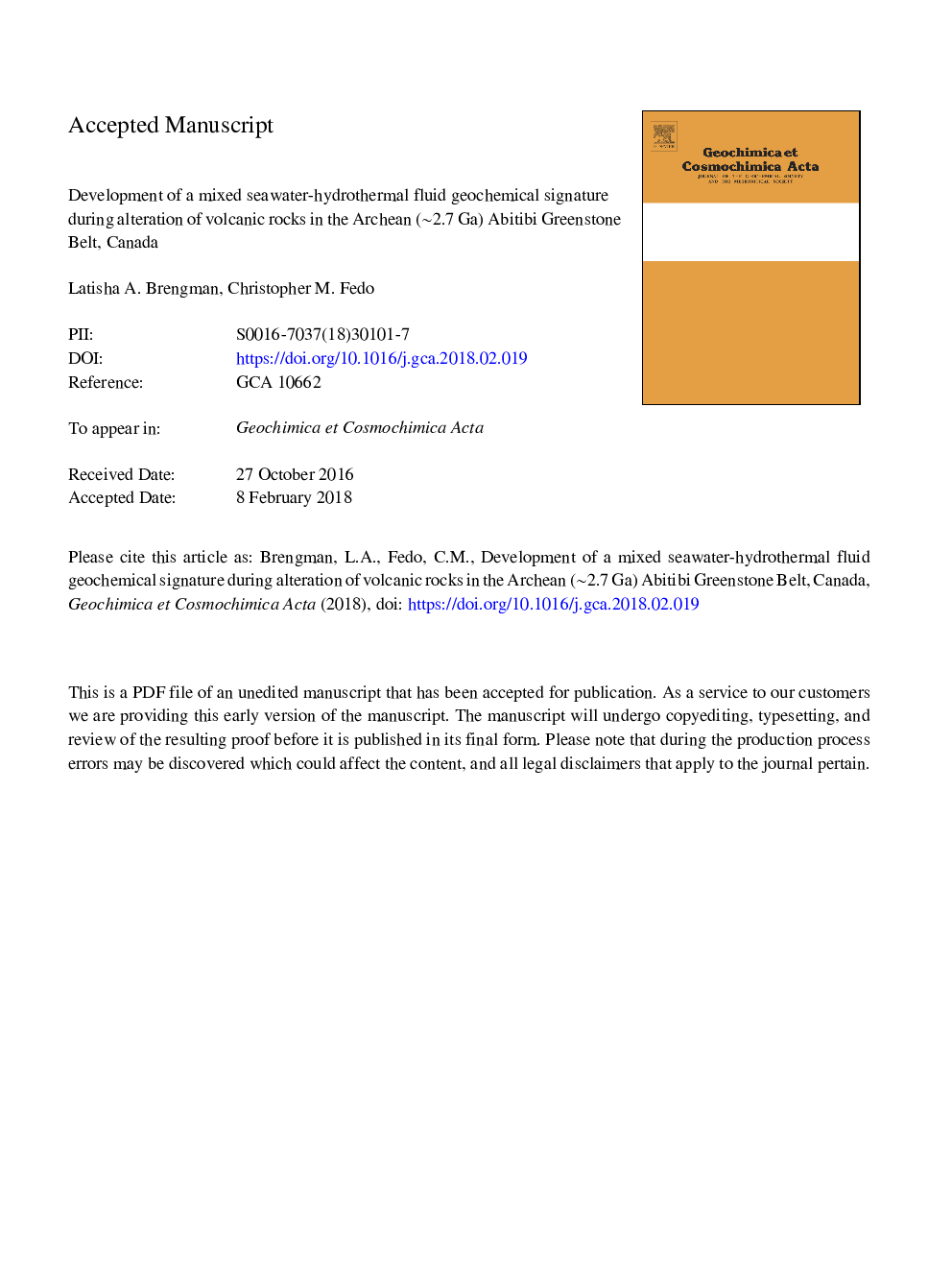| Article ID | Journal | Published Year | Pages | File Type |
|---|---|---|---|---|
| 8910816 | Geochimica et Cosmochimica Acta | 2018 | 47 Pages |
Abstract
We interpret that silicification of volcanic rocks (Group 1) produced transitional altered volcanic rocks (Group 2), and siliceous and jaspilitic rocks (Group 3), based on preservation of delicate volcanic features. Building on this explanation, we interpret that major, trace- and rare-earth element mobility occurred during the process of silicification, during which siliceous and jaspilitic rocks (Group 3) acquired aspects of the rare-earth element geochemical signatures of marine chemical precipitates. We conclude that seafloor silicification in hydrothermal depositional settings is capable of producing rocks that resemble marine chemical precipitates such as banded iron formation, and could be a process that is widespread in the Archean. Consequently, because silicified volcanic rocks from the HMG possess mixed seawater and hydrothermal rare-earth element characteristics similar to Archean iron formations and cherts, we suggest caution must be exercised when interpreting the geochemical information preserved in metamorphosed rocks where original genesis is unknown.
Related Topics
Physical Sciences and Engineering
Earth and Planetary Sciences
Geochemistry and Petrology
Authors
Latisha A. Brengman, Christopher M. Fedo,
